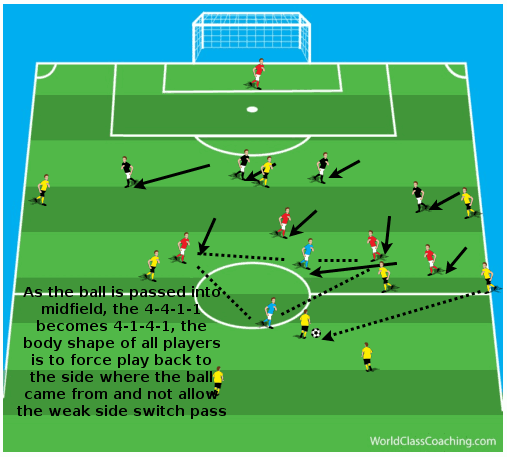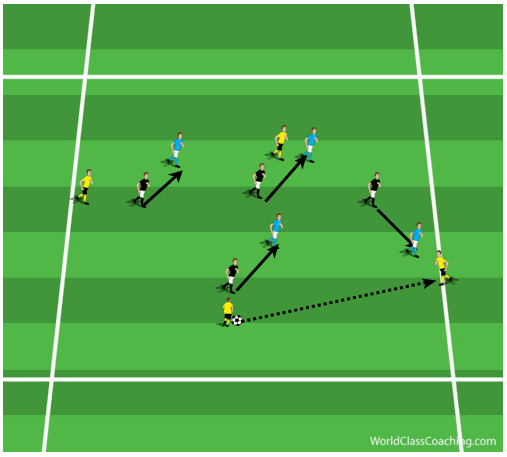Rather than standing in lines and running around cones, it’s through playing futsal that many elite level players, particularly in Brazil and Spain, developed their silky ball skills, smooth passing and lightning quick decision making. Players love small sided games, and the benefits are obvious. Players get more time on the ball, more touches and the intense nature of futsal puts them under more pressure to be perform. It’s a wonder it’s taken so long for coaches to realize the benefits of harnessing futsal in their training programs.
From Futsal to Soccer explains everything you need to know on how to use futsal as a development tool. This includes a guide on the skills and principles relevant to 11v11 games, how elite level teams demonstrate the spirit of futsal in how they play and training drills for creating development focused futsal practice sessions.
Here's an excerpt from From Futsal to Soccer
POSITIONING IN AND OUT OF POSSESSION DEFENSE AND ATTACK
Futsal Defending Scenarios
In Futsal, you will often see a team change its shape when the ball moves, when players rotate positions, and when the ball is in various areas. For example, you may sometimes see that when a team has the ball on the left touchline on the half way line, the attack may be in a 2-2 box shape, while the defence plays the same, man-marking close to goal, and playing in a more zonal system closer to the half way line.
As the players change position, and the ball is moved, the opposition must move, making space for the attack to possibly find a way through, but to counter this, you will often find that the 2-2 box will evolve into a 1-2-1 diamond, to cover both sides, and block the passing lane into the striker, forcing play wide and into a dangerous position for the attack, and giving the defender on the side the chance to win the ball via an interception, forcing a mistake or the ball going out of play.
Example of a 2-2 box moving to a 1-2-1 diamond
In this example, the 5 use a flying goalkeeper (common in Futsal when you need to score a goal, but dangerous as a long shot can result in a goal), so have a 5v4 overload. The defence needs to close off passing angles and stop the attack from using the spare player, but be aware of movement behind.
As the top of the diamond presses the ball, he wants to force play back where it came from, and stop the opposition from moving the ball around easily, restricting the amount of times the defence need to move, restricting the amount of space that can open up to use to attack with.
Futsal 3-1 to 2-2 defensive formation
Here, the striker presses high on the playmaker, and with his body shape, cuts off a pass one way, forcing the pass to the other. As he does this, this is a trigger for the player on the relevant side of the ball to move early to press the next receiver, or if possible, intercept. It is important to try to force this player wide and backwards if possible, stopping the receiver from turning and forcing them to play back, or possibly winning possession.
This is based on a zonal defence, where players have to be aware of the various rotation patterns teams may have, but each player is responsible for an area on the field and must defend that zone, obviously marking runners to a point before passing them on if the team mate is free. When pressing, the defence will force the opponent wide or back (preferably both) whenever possible, disallowing any play through the center.
[wpsharely id="6889"] [/wpsharely]From Futsal to Soccer covers the technical and tactical connections that make the game of Futsal a great tool for teaching the most important principle of successful soccer.
Have a great day!
Tom





